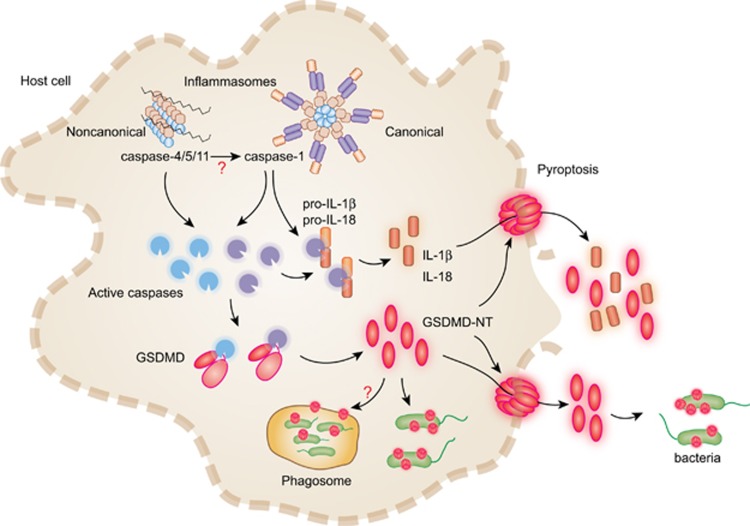Figure 1.
GSDMD cleavage by the inflammatory caspases leads to pyroptosis. GSDMD-NT induces mammalian cell pyroptosis and bacterial death by punching membrane holes. In response to microbial infection and danger signals, inflammatory caspases (caspase-1 (purple) and caspase-4/5/11 (blue) are activated via canonical or non-canonical inflammasomes, respectively. In turn, active inflammatory caspases target and cleave GSDMD, releasing its N-terminal fragment GSDMD-NT. Activated caspase-1 processes pro-IL-1β and pro-IL-18, but the other inflammatory caspases do not do this directly but are thought to do it indirectly by causing caspase-1 activation. GSDMD-NT forms pores in the plasma membrane of the infected cell, resulting in pyroptotic cell death and release of bacteria and cytokines that alarm the immune system. GSDMD-NT also directly kills the bacteria that trigger inflammasome activation. It is not known whether GSDMD-NT also permeabilizes vesicular membranes, such as the phagosome, in cells

